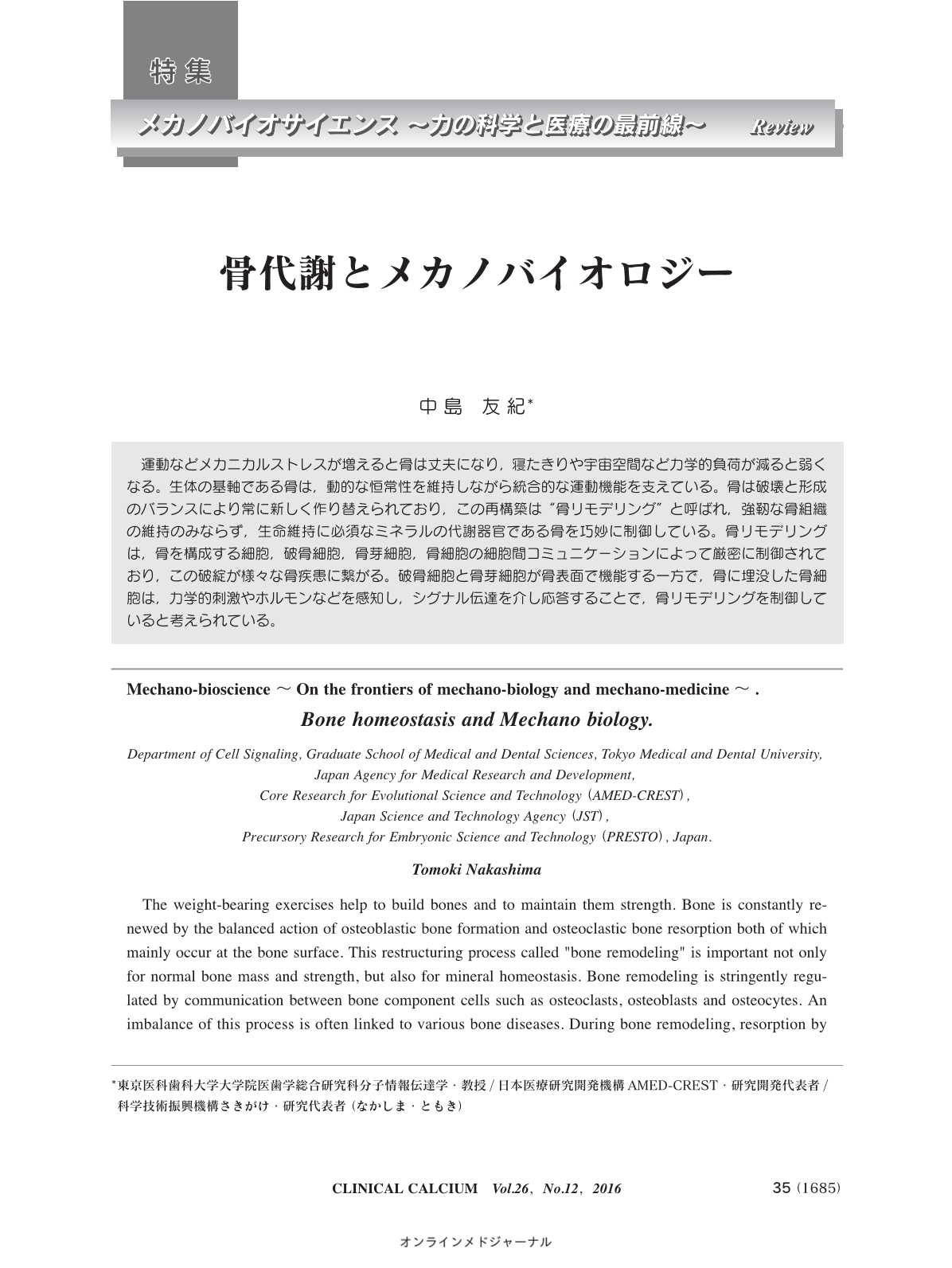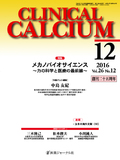Japanese
English
- 有料閲覧
- Abstract 文献概要
- 1ページ目 Look Inside
- 参考文献 Reference
運動などメカニカルストレスが増えると骨は丈夫になり,寝たきりや宇宙空間など力学的負荷が減ると弱くなる。生体の基軸である骨は,動的な恒常性を維持しながら統合的な運動機能を支えている。骨は破壊と形成のバランスにより常に新しく作り替えられており,この再構築は“骨リモデリング”と呼ばれ,強靭な骨組織の維持のみならず,生命維持に必須なミネラルの代謝器官である骨を巧妙に制御している。骨リモデリングは,骨を構成する細胞,破骨細胞,骨芽細胞,骨細胞の細胞間コミュニケーションによって厳密に制御されており,この破綻が様々な骨疾患に繋がる。破骨細胞と骨芽細胞が骨表面で機能する一方で,骨に埋没した骨細胞は,力学的刺激やホルモンなどを感知し,シグナル伝達を介し応答することで,骨リモデリングを制御していると考えられている。
The weight-bearing exercises help to build bones and to maintain them strength. Bone is constantly renewed by the balanced action of osteoblastic bone formation and osteoclastic bone resorption both of which mainly occur at the bone surface. This restructuring process called "bone remodeling" is important not only for normal bone mass and strength, but also for mineral homeostasis. Bone remodeling is stringently regulated by communication between bone component cells such as osteoclasts, osteoblasts and osteocytes. An imbalance of this process is often linked to various bone diseases. During bone remodeling, resorption by osteoclasts precedes bone formation by osteoblasts. Based on the osteocyte location within the bone matrix and the cellular morphology, it is proposed that osteocytes potentially contribute to the regulation of bone remodeling in response to mechanical and endocrine stimuli.



